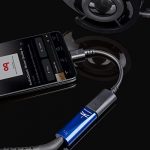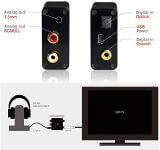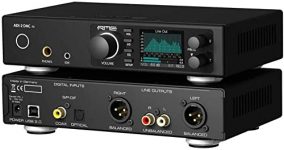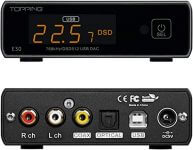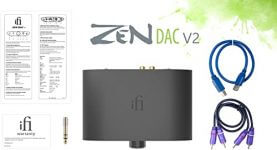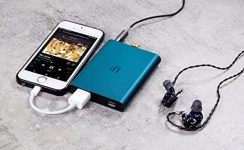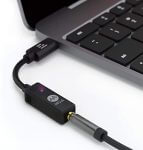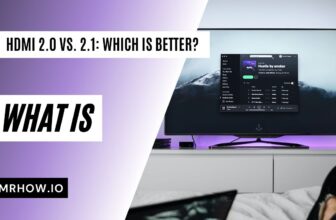A digital-to-analog converter, also referred to as a DAC, can greatly influence the quality of your audio. With numerous DACs available for purchase, choosing one can be quite overwhelming. However, several provide the high-quality sound you seek, along with many desirable, essential features.
This post will break down the basics of choosing a DAC, highlighting key factors you should consider. Whether you’re a music enthusiast or want better audio, understanding these elements will help you pick the proper DAC for your needs. Let’s dive in!
What is a DAC?
The digital-to-analog converter (DAC) plays a crucial role in any hi-fi audio system, converting digital audio signals into analog signals that can drive amplifiers and speakers.
With DAC technology and features evolving rapidly, navigating the DAC marketplace can feel daunting for audiophiles seeking high-fidelity sound.
Choosing the Best DAC
- Resolution + Bit Depth – Ideal DACs should capture all the detail in your digital audio source material. Target 24-bit/192 kHz DACs to maximize fidelity for lossless hi-res streaming or downloads.
- Dynamic Range – Seek DACs achieving at least 120 dB range for perceptually transparent dynamics able to convey both powerful and subtle musical contrasts realistically.
- Distortion + Noise Levels – Minimizing unwanted artifacts allows DACs to reproduce pristine sonics transparently—audition units with THD+N of 0.001% or lower.
- Analog Output Stage – Quality amplification circuitry ensures your DAC properly drives speakers without alteration or interference. Discernible improvements come from robust discrete designs rather than cheaper integrated op-amps prone to harshness or congestion.
- Input / Output Options – Assess connectivity essentials based on your playback sources and system configuration to select an interfacing-friendly DAC that matches your needs.
- Audition Extensively – Our perceptual equipment for discerning superb music reproduction remains unrivaled by measurement test benches. Listen critically to candidate DACs using familiar reference recordings to choose the exemplar that satisfies your ears, emotions, and soul.
AudioQuest – DragonFly Red USB DAC
AudioQuest Dragonfly Cobalt USB Digital-to-Analog Converter
AudioQuest is one of the most recognized manufacturers of audio/video accessories based in California, USA. They are known for their high-end digital-to-audio converters designed for optimum performance. AudioQuest is the company that introduced compact USB DACs back in 2012.
One of their most popular models is the DargonFly RED USB DAC, an upgrade to their previous model, the DragonFly Black. It is not among the affordable USB DACs in the market, but it might be challenging to find a similar device when it comes to value for your money.
These are made to give a boost to your headphones. With a 2.1v output, it can work with any headphones you own. You can also use an adapter with smartphones, both Apple and Android. In addition, it can play anything from a low-resolution MP3 to high-resolution music up to 24-bit/96kHz.
The performance is also better than most of the USB DACs. The sound quality is better than the previous model, offering a more sophisticated listening experience. With a bass extension, you can experience texture and solidity, making each sound three-dimensional.
FiiO D3 (D03K) DAC
Second on our list is the D3 (D03K) DAC by FiiO, a well-known Chinese manufacturer of high-end audio equipment. The FiiO D3 (D03K) is an exceptionally affordable and powerful amplifier.
It works with 1.6v output and acts as an amplifier and a DAC. It works with almost all ordinary sample rates from 24-bit/32kHz to 24-bit/ 192kHz. It is a better option for those who want to use a DAC with speakers instead of headphones. You can use both coaxial and optical digital output as it works with various music sources, including digital TV, HD-DVD players, game consoles, AV receivers, and other digital media players.
The performance is also outstanding for the price value as it features a WM8805 ultra-low jitter digital receiver. It comes with a USB AC Power Adapter, which needs an external power source. It is also an effortless and straightforward device that can be easily installed and used.
RME ADI2DACFS Ultra-fidelity PCM/DSD
RME ADI2DACFS Ultra-fidelity PCM/DSD 768 kHz 2-Channel DA Converter
Are you looking to take your digital audio playback to the next level? Look no further than RME’s ADI2DACFS! This powerhouse converter allows for sample rate conversion up to 768kHz. Plus, it features both SPDIF optical and coaxial connectors and a USB connection for Macs, PCs, and tablets. With this converter in your arsenal, you’ll be able to get the most out of your digital audio files!
The ADI2DACFS is a versatile DAC with balanced/unbalanced analog I/O, a high-power headphone output, SteadyClock FS, low noise in-ear-monitor output, and class-compliant USB compatibility.
It is ideal for musicians, engineers, or music lovers seeking the best digital-to-analog conversions with an easy-to-use feature set. USB has been used to record the SPDIF input signal from the actual two-channel Full Duplex audio interface.
TOPPING E30 DAC Hi-Res AK4493
TOPPING’s E30 DAC Hi-Res is perfect for music lovers who want to maximize their audio experience. This device supports DSD512 and PCM32bit/768kHz audio formats, making it capable of reproducing even the most nuanced details of your favorite tracks.
Its 5V power supply also ensures compatibility with a wide range of devices and listening scenarios. Finally, the E30 DAC Hi-Res also doubles as a pre-amp, making it ideal for use with an amplifier or powered speakers.
This hi-res dynamo supports USB, OPTIC, and COAXIAL inputs, making it perfect for any audio application. With a 119dB signal-to-noise ratio @ 1kHz, the E30 will consistently deliver pristine sound quality.
iFi Zen DAC V2
Experience the clarity and difference of the iFi Zen DAC V2. It’s the perfect way to upgrade your home, office, or desktop audio system. This compact DAC gives you great sound through your headphones, active speakers, or amplifier, with connections for USB 3.0 (USB 2.0 compatible), headphones, balanced mode, and RCA.
The iFi Zen DAC V2 is a high-resolution audio converter that lets you hear familiar songs in a new light. Rich detail and warm natural tones are created by the Burr-Brown True Native digital-to-analog converter, which can process any hi-res audio format up to PCM 384kHz/24 bit, DSD256, DXD 384kHz, and decodes MQA, all without additional conversion.
It is a technological powerhouse, designed with variable analog volume control, PowerMatch adjustment for in-ear monitors and over-ear headphones, and TrueBass to add bass to in-ear monitors. It also boasts a new and improved low-jitter clock for superior performance.
iFi Hip-dac Portable Balanced DAC
iFi Hip-dac Portable Balanced DAC Headphone Amplifier
The iFi Hip-Dac Portable Balanced DAC Headphone Amplifier is the perfect way to take your music wherever you go. With up to 6 hours of battery life and a slim, lightweight design, it’s ideal for carrying in your pocket. And with high-resolution audio support for all your favorite formats, you can listen to any song how it was meant to be heard.
Plus, the powerful onboard amplifier lets you get the most out of your headphones, whether they’re in-ear monitors or over-the-ear headphones.
Experience audiophile-quality sound without sacrificing portability with the iFi Hip-Dac Portable Balanced DAC Headphone Amplifier. This device offers Power Match and XBass analog enhancements to customize your listening experience. At the same time, its digital conversion ensures you can listen to any high-resolution audio format with native playback.
With a direct connection to your smartphone via USB input and balanced 4.4mm or S-Bal 3.5mm headphone plugs, the Hip-Dac is incredibly versatile and easy to use.
HELM Audio Bolt DAC/AMP
HELM Audio Bolt DAC/AMP, USB-C Portable High-End DAC/Headphone Amplifier
The HELM Audio BOLT DAC/AMP is a high-end, portable DAC/headphone amplifier that supports MQA streaming for unparalleled fidelity in portable audio. Compatible with Android, iOS, Mac, and PCs, the BOLT delivers studio sound on the go. With amplified audio output and headphone output level matching, the BOLT provides an average increase of +6 dB in devices with combined USB audio output.
The USB-C input conveniently connects to your PC or laptop, while the 3.5mm audio jack effortlessly connects to your wired headphones or speaker system. The headphone output automatically detects your headphones’ impedance and sets the level accordingly so that you can enjoy the crisp, clear sound without any guesswork.
Audiolab M-DAC+ High-Performance Audio DAC
The HELM Audio Bolt DAC/AMP is the perfect way to upgrade your audio experience. The ES9018 Sabre Reference 32–bit DAC chipset features enhanced sonic performance and supports future ultrahigh–definition digital sound advances.
Whether you’re using it with your computer, phone, or tablet, the Adjustable Sonic Performance feature ensures you get the best sound for your device and listening preferences.
iFi Nano iDSD Black Label
iFi Nano iDSD Black Label Portable USB DAC and Headphone Amplifier
With its Burr-Brown True Native chipset, the files remain unchanged, giving you a clear and authentic sound. Plus, it has up to ten hours of battery life, so you can take it wherever you go and enjoy your music for longer.
The iFi Nano iDSD Black Label delivers MQA playback straight out of the box, thanks to its built-in firmware. The analog volume control provides smooth action and sound with precision, while the professional tone of voice ensures that your music sounds its best.
This top-of-the-line product offers S-Balanced technology for maximum performance, plus a USB Type-A connector for a stable wired connection.
Key DAC Specifications
Resolution and Bit Depth
Higher resolution DACs with increased bit depth more accurately convert digital signals by sampling audio waveforms at higher frequencies and quantization levels. This enables DACs to reproduce the full dynamic range and musical nuances encoded in digital audio files or streams.
DAC Resolution
- DAC resolution indicates the number of bits used to represent each audio sample. Common resolutions include 16-bit, 24-bit and 32-bit.
- 24-bit DACs are considered high-resolution, capturing a more comprehensive dynamic range and four times more data points than standard 16-bit DACs.
- Higher 32-bit DAC resolutions enable digital audio processing with virtually no quantization noise or distortion artifacts.
Bit Depth
- Bit depth refers to the number of amplitude levels a DAC assigns to each sampled audio waveform point when quantizing analog music into digital form.
- 16-bit audio provides 65,536 quantization levels, while 24-bit audio offers 16.7 million levels, enabling more precise replication of musical details.
- Higher bit depths reduce quantization errors, improving audio clarity and transparency.
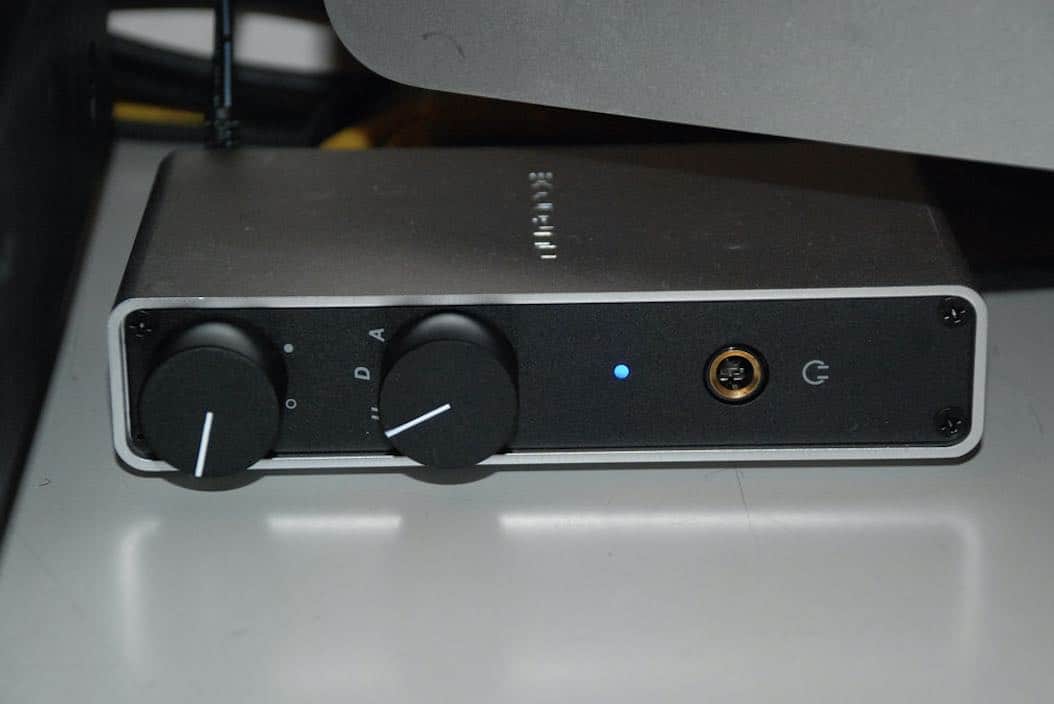
Sampling Rate
The audio sampling rate determines how many snapshot samples of an analog audio waveform are captured per second to convert music into digital data. Higher sampling rates result in broader frequency response and improved perceptions of musical liveliness.
- Standard DAC sampling rates include 44.1 kHz, 48 kHz, 96 kHz, and 192 kHz.
- 96 kHz DACs sample audio waveforms twice as frequently as the 44.1 kHz CD standard, preserving more harmonic details.
- Very high 192 kHz rates offer overlapping frequency response beyond human hearing, which some audiophiles still find provides sonic improvements.
Oversampling
- To increase effective sampling rates, many DACs utilize oversampling techniques. This involves capturing audio at lower native rates and interpolating additional synthetic data points.
- Appropriately done, oversampling can help DACs better reconstruct analog waveforms from digital data by smoothing out quantization errors. However, poor oversampling algorithms can result in artifacts or distorted sound.
Dynamic Range
The dynamic range indicates the difference between the maximum undistorted audio level and the lowest detectable signal a DAC can resolve. A more comprehensive dynamic range allows DACs to determine thunderous peak transients and silky low-level details essential for conveying a realistic and immersive musical experience.
- 16-bit DAC dynamic range spans around 96 dB, while 24-bit DACs commonly achieve 120 dB or more of dynamic range.
- State-of-the-art DACs are now attaining 144 dB, close to the theoretical limit, enabling them to reproduce live music dynamic contrasts realistically.
Total Harmonic Distortion + Noise (THD+N)
THD+N represents the percentage of unwanted harmonic distortion products and background noise a DAC introduces relative to the original audio signal—lower distortion results in more faithful and transparent sound quality.
- Excellent measuring DACs achieve THD+N values less than .002%, ensuring accurate analog signal reconstruction without added noise or spurious artifacts.
- Listen for DACs with vanishingly low distortion and flat frequency response across the audible spectrum to ensure neutral, genuine audio reproduction.
DAC Output Stage
After the digital audio data is converted to an analog signal, it passes through the DAC’s analog output stage, which can significantly impact the resulting sound quality.
- Quality components like discrete transistors and resistors in the output stage provide accurate signal transfer without adding noise or distortion.
- Some DACs incorporate vacuum tubes in the output stage, providing a smooth, natural tonality preferred by audiophiles.
- Balanced XLR and unbalanced RCA output connections are common, allowing interfacing DACs with different amplifiers or speaker setups.
Connectivity and Features
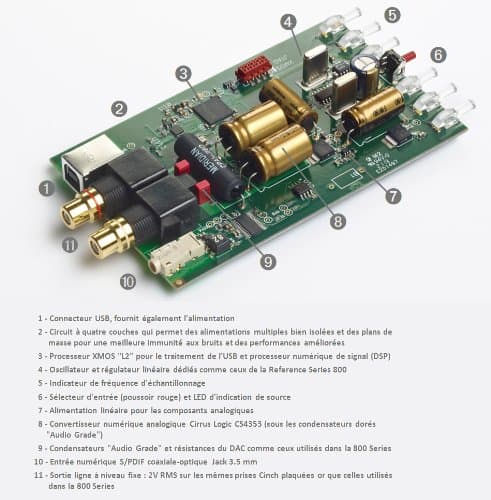
The digital input and output options, headphone capabilities, and other bonus features you require will influence DAC selection. Consider the components in your ecosystem and how you prefer to listen when evaluating DAC connectivity and functionality.
Digital Audio Inputs
- Common DAC digital audio inputs include USB, optical, coaxial, and AES/EBU, which receive binary data from source components like media streamers, CD players, and computers.
- Some DACs provide multiple inputs for connecting various sources and comparing their sound signature.
- Assess your digital source equipment connections to determine essential DAC inputs.
Headphone Amplifiers
- Audiophile DACs incorporate premium headphone amplifiers, enabling private listening through high-performance headphones.
- Headphone outputs may support driving different impedance loads. Evaluate your headphone specifications when selecting amplifier pairings.
Added Functionality
- External clocks, crossfeed circuits, and parametric EQ are additional DAC features that fine-tune audio playback alignment and customize listening experiences.
- Consider whether added capabilities like remote control adjustments, preamplifier volume management, or Wi-Fi streaming sync with your workflow and system configuration.
Types of DACs
Standalone DACs
Dedicated standalone DAC components are designed specifically for optimized digital-to-analog conversion from an external playback source component. Some benefits include:
- Isolated enclosures avoid electronic interference for purer audio Signals.
- Components fine-tuned solely for DAC functionality often outperform multi-purpose chipsets.
- Flexible interfacing through multiple digital and analog inputs/outputs.
- Offer precision upgrades tailored for high-resolution audio systems.
The drawback of standalone DACs is the added cost, footprint, and cable connections versus integrated designs.
Integrated DAC/Amplifiers
Rather than chaining separate DAC and amplifier components, integrated DAC/amplifier combos package amplification directly coupled to an onboard DAC into single-box devices. Pros and cons include:
- A convenient all-in-one setup minimizes cabling and reduces noise through short internal signal paths between circuits
- Shared power supplies and clocking for fundamentally synchronized listening experiences
- Space savings from merging components make them appealing for minimalist or desktop arrangements
- Integrated designs may involve some audio quality compromises to fit all circuitry into cramped enclosures
Increasingly popular options include wireless networked amplifiers with Wi-Fi and Bluetooth connectivity for streaming DAC accessibility.
DAC Equipped Stereo Receivers
Home theater receivers designed for stereo music and surround sound cinema incorporate onboard DACs to handle HDMI theater signals and directly decode high-res digital audio from connected media sources.
- Allow building whole-home entertainment systems around a centralized, versatile AV receiver hub
- Provide multi-channel playback from DAC for immersive audio formats like Dolby Atmos
- Music is often a secondary rather than primary design consideration – stereo fidelity may be compromised
DAC implementations tailored specifically for audiophile-quality music remain the best option for discerning hi-fi listeners rather than receivers serving dual purposes.

